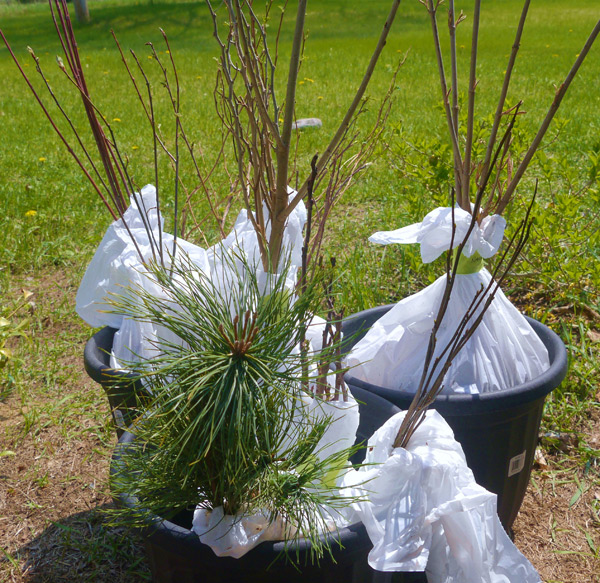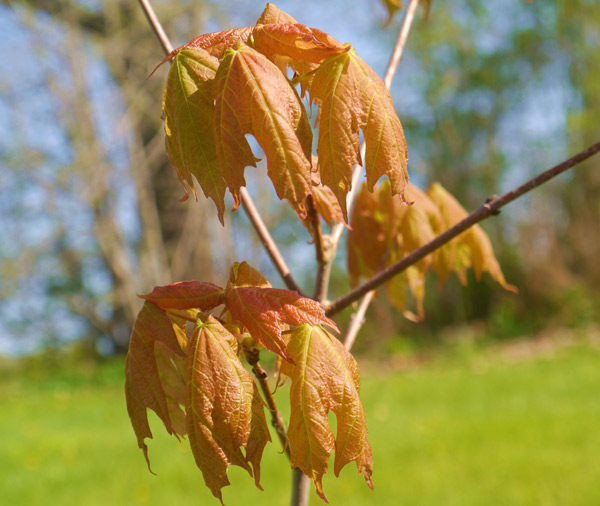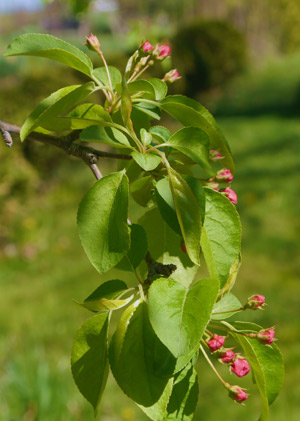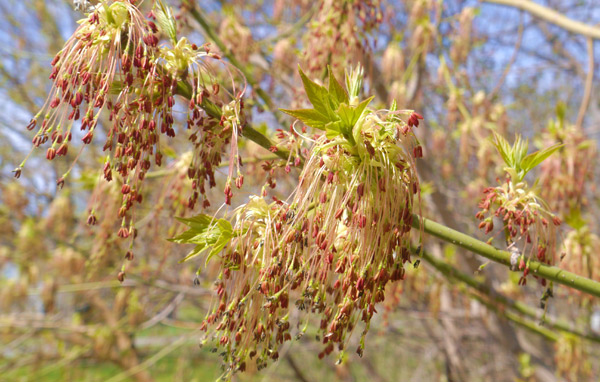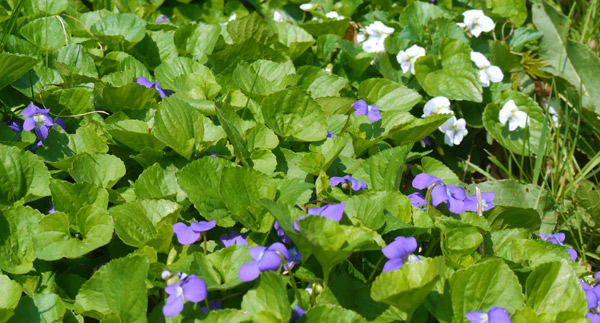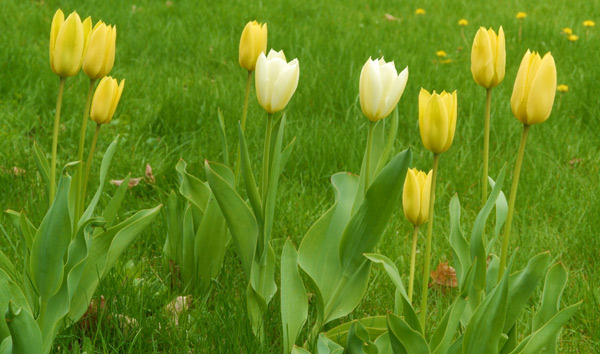Tip-toeing through the tulips, tree planting and petrichor
Administrator | May 19, 2025 | Comments 0
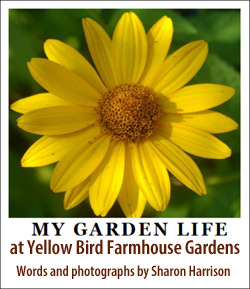 Tree planting is a big part of the May gardening scene at my house this spring, and while they are not exactly trees as we imagine trees to be at this point, the recently acquired bare-root tree seedlings (or saplings), ranging from one-foot twigs to more sturdy four-foot specimens, need planting quickly.
Tree planting is a big part of the May gardening scene at my house this spring, and while they are not exactly trees as we imagine trees to be at this point, the recently acquired bare-root tree seedlings (or saplings), ranging from one-foot twigs to more sturdy four-foot specimens, need planting quickly.
Around 25 tree seedlings are being planted and for any that don’t get planted right away, they will be potted up temporarily and tended for the duration, to be planted up as soon as energy allows, and decisions can be made on where they will spend the rest of their, hopefully, long lives.
This year, red maple (acer rubrum), tulip tree (lirodendron tulipifera), black cherry (prunus serotina), white pine (pinus Strobus) and hack berry (celtis occidentalis), all native species, will add to the tree population contributing to the young (and old) trees existing, some singularly planted (white pine, white spruce, red pine, tamarack, linden, maple and juniper), others grouped in small forest pockets (oaks, birches).
Along with the trees seedlings, 25 shrub seedlings will also be planted this month to help populate bare areas, to encourage bird and insect habitat, along with adding some interest and privacy to the mostly open landscape. Ninebark (physocarpos opulifolia), nannyberry (viburnum lentago), spicebush (lindera benzoin), Saskatoon serviceberry (amelanchier alnifolia) and chokecherry (prunus virginiana) are among them, and they too are all native species to the local area.
Having always had a great connection and attachment with forests and woodlands and trees, I am no stranger to tree seedling planting and will take any opportunity to plant more, where, back in the day, I have planted 500-plus tree seedlings at a previous property (17-acres) spanning several years.
Fast forward some 25 or 30 years, and I find myself back to planting trees once again, albeit on a smaller scale, to embellish the landscape, provide future shade, improve the environment, help mitigate the effects of a changing climate, and increase biodiversity, among the many other benefits.
I miss not having a big, mature woodland and I still miss individual trees, those I recall sitting under, leaning against old gnarly protruding roots, those with enormous trunks to hug, or just be in the company of, just because it often just felt good to be there. I felt a deep connection to some, where maybe oddly, those trees will somehow never be forgotten, nor the way they made me feel at certain times as they became a confidante of sorts, to be visited often.
The young trees I so carefully planted and watched grow into fine young specimens are also remembered, proud of the achievement, marvelling at how they did so well with little intervention after the first few years of a strict watering regime. This current exercise of tree planting takes me back to those times, and they were fun times, rewarding too, knowing future generations would benefit from the hard planting task.
With work already started by past owners in what I refer to as tiny forests, or at least the makings of a collection of little forests, clumps of young trees dot the landscape, some just six or 10-feet tall, others already towering some 15 or 20-feet. This place will be called a forest someday, but probably not for a few decades at least. For those little tree seedlings being planted now, while I will get to see them progress through the years, hopefully nurtured for the first few tender years, it is those people (and the environment) decades from now who will mostly benefit when the trees are 30, 50 or even 100 years old or more.
While spring got off to a cool start, it has lacked a great amount of rainfall (especially to aid tree planting), but on a warm spring day recently, the falling rain appeared to instantly bring the garden to life, the air refreshed had to be inhaled deeply to be appreciated as I acknowledged the unique scent of the garden. Hard to fully describe, the smell surrounding, while it can be experienced at any time of the year, is mostly associated with springtime, and it does have a name.
Simply put, petrichor is the word given to the smell of rain. It describes the unique pleasant scent emanating from the earth after a first rain, most often occurring in spring, as the ground is refreshed, the soil is replenished as warm water hits dry soil providing a fabulous warm earthy fragrance like no other. There is a deeper explanation for the process of what happens when rain hits dry soil, and there a science behind it, which I will not attempt to get into here. But essentially, when it rains after a period of no rain, compounds are released into the air from the wet earth (soil bacteria and plants) in a chemical reaction creating the familiar aroma many associate with especially at this time of year.
And as for the tulips, while I don’t have enough tulips planted (yet) to be doing much in the way of tip-toeing through them (different story with dandelions and violets though), they are worthy of admiration. Blooming tulips annually bring to mind a song of the same name (Tip Toe Through the Tulips) that never seems to date, despite being written in 1929 (by Al Dubin and Joe Burke).
The version in my memory growing up (long since becoming an earworm) is by musician Tiny Tim (real name Herbert Butros Khaury) in 1968. He had a rather strange, but not totally unpleasant, high-pitched voice (known for his falsetto), and along with his accompanying ukulele, it’s a song that still brings a smile today, especially at this time of the year as the tulips begin to bloom in all their splendor – he even named his only child, Tulip.
– A gardener all her adult life, and much of her childhood, Sharon Harrison blames her parents for this predicament, both of whom are life-long gardeners and growers of good things, nonetheless grateful for the gardening genes, and the growing passion.
While she has written on countless topics over many years for numerous publications and media, her heart remains rooted in her Prince Edward County garden as a grower of beautiful, strange and sometimes ordinary things, inspired and influenced by nature, wildlife and the fragility of environment.
Filed Under: News from Everywhere Else • Sharon Harrison
About the Author:



